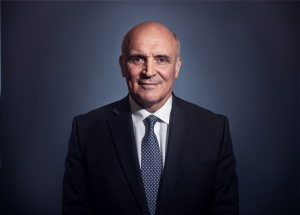Argentina’s peso posted its longest losing streak since the country abandoned the dollar peg in 2002 as President Cristina Fernandez de Kirchner seeks to help manufacturers compete against less expensive imports.
The peso fell for the eighth straight month, declining 0.3 percent to 3.9512 per dollar in August, for its longest slide since the end of the peg in January 2002. The currency is down
3.9 percent since Jan. 1. Today’s close was the weakest since President Carlos Menem created the peso in 1991 to stem inflation that topped 20,000 percent a year earlier.
The central bank is buying dollars, pushing up foreign reserves at the fastest rate since 2007, to weaken the peso and make local companies more competitive. Annual inflation that HSBC Holdings Plc estimates will reach 27 percent this year is making products assembled in the country more costly than those produced abroad.
"High inflation continues to erode the currency’s competitiveness," said Clyde Wardle, an emerging-market currency strategist at HSBC Holdings in New York, who expects the peso to weaken to 4.10 per dollar by year-end. “We still expect the currency to be managed weaker.”
The peso will fall 4.6 percent to 4.14 per dollar by the end of the year, according to the median forecast in a survey of
14 economists by Bloomberg.
Seeking Competitive Rate
Argentine reserves have climbed $2.3 billion this year, the most since jumping $14.2 billion in 2007, to $50.3 billion.
Reserves reached a record $51.1 billion on Aug. 2, the day before the government tapped them to make a payment on dollar bonds due in 2012, according to the central bank.
Building reserves "allows us to sustain the exchange rate," which in turn permits Argentina to maintain a trade surplus, Fernandez, 57, said in an Aug. 18 speech in the city of Rosario in the province of Santa Fe.
"We must have a competitive exchange rate to be able to export, otherwise remember what happened under the one-to-one rate," Fernandez said. "We were all fascinated because we thought we had dollars in our pockets, but we had pesos, and the nation was almost bankrupted."
President Eduardo Duhalde ended the one-to-one peg in January 2002, a month after the nation defaulted on a record $95 billion of bonds. Within six months, the currency tumbled to
3.86 per dollar.
A central bank official who asked not to be named in accordance with bank policy declined to comment for this story.
Alfredo Scoccimarro, a spokesman for Fernandez, didn’t return a call for comment.
Credit Default Swaps
The cost of protecting Argentine debt against non-payment for five years with credit-default swaps slid 2 basis points to
948 today, according to data compiled by CMA DataVision. Credit- default swaps pay the buyer face value in exchange for the underlying securities or the cash equivalent should a government or company fail to adhere to debt agreements.
The extra yield investors demand to hold Argentine dollar bonds instead of U.S. Treasuries today rose 1 basis point to 757, according to JPMorgan Chase & Co.’s EMBI+ index. The spread is up from a three-month low of 653 on Aug. 9.
The yield on benchmark 7 percent bonds due in 2015 fell 7 basis points, or 0.07 percentage point, to 11.2 percent today, according to Bloomberg market average pricing. Warrants linked to growth in South America’s second-biggest economy rose today
0.27 cent to 9.85 cents, according to data compiled by Bloomberg.
Higher Prices
Weakening the currency could further fuel inflation, said Jose Luis Espert, an economist who runs Espert & Asociados economic consulting company in Buenos Aires.
"A stronger devaluation would lead to even faster inflation," said Espert, who estimates inflation is about 25 percent to 30 percent a year, more than double the official rate.
Economists and government officials including Vice President Julio Cobos have questioned the accuracy of the inflation data, saying officials have underreported price increases since January 2007, when former President Nestor Kirchner made personnel changes at the statistics agency.
The central bank has bought dollars to weaken the peso amid a record 55-million metric ton soybean harvest and as foreign investment picked up following the $12.9 billion defaulted-debt swap in June, HSBC’s Wardle said.
The peso’s decline may quicken in the fourth quarter as exports taper off and investors pull money from the country on concern the government will struggle to meet its 2011 financing needs, said Guillermo Mondino, an analyst in New York at Barclays Plc. The currency may decline to 4.22 per dollar by the end of the year, Mondino said.
"The government is going to allow the currency to depreciate a little bit faster," he said.

